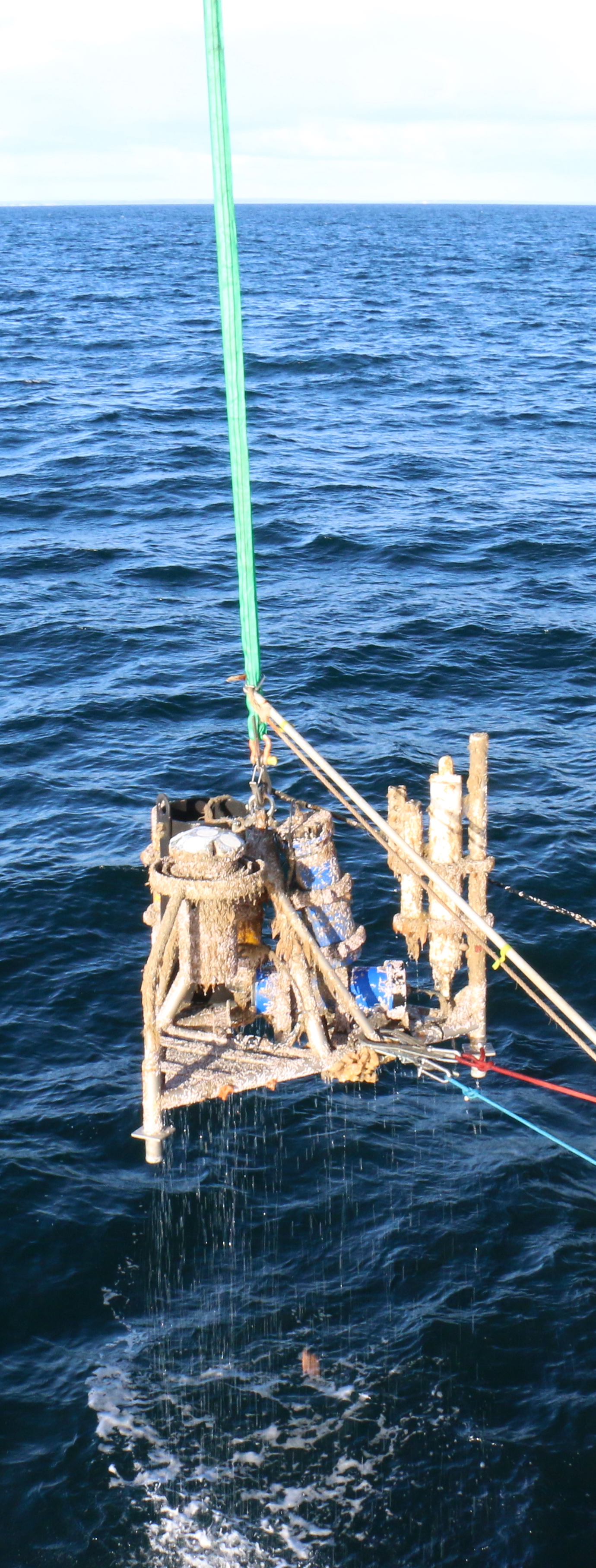Abstract's details
A new inverted echo sounder for satellite altimetry calibration and validation.
Event: 2018 Ocean Surface Topography Science Team Meeting
Session: Regional and Global CAL/VAL for Assembling a Climate Data Record
Presentation type: Poster
A new inverted echo sounder for satellite altimetry calibration and validation.
Benoit LEGRESY (1,2) and Christopher WATSON (2,3)
(1) Climate Science Centre, CSIRO Oceans and Atmosphere, Hobart, Tasmania, Australia
(2) IMOS, Australia Integrated Marine Observing System
(3) School of Technology, Environments and Design, University of Tasmania, Hobart, Tasmania, Australia
In view of the developing higher spatial resolution altimetry missions, we have been developing new in situ calibration/validation tools. In order to tackle the challenge of higher resolution radar altimeters, there sensitivity to wave or to sea surface height heterogeneity within the footprint, we develop instrumentation to investigate the more local and higher frequency SSH signals. The Bass Strait cal/val area is situated in the South West of the strait and is now equipped for the historical Jason site, but also for Sentinel-3A and Sentinel-3B. The classic method that was used in there over the past decades included, besides a reference coastal tide gauge, permanently recording moorings recording bottom pressure, temperature and salinity through the column. The accurate altitude reference is achieved by regular short-term occupation of the mooring sites with GPS buoys. This ensures both attaching the SSH measurements to the same reference frame as the satellite and also to correct for the bottom pressure sensor temporal drift. With time some current meters were added to the kit in order to validate the regional ocean dynamics.
Recently we added kits with bottom mounted 5 beam Acoustic Doppler Current Profilers. These allow measuring currents profiles, but also waves and Sea Surface Height. Here, we present the results from the first year of operation of the system. The system was deployed at a Sentinel-3B crossover and includes the bottom pressure, temperature and salinity sensors on top of the ADCP. We analyze the ADCP data and it’s high frequency signals thanks to the high (>1Hz) sampling frequency. We also compare the measurements to the Bottom pressure and seawater density variations. We find that the acoustic system can track the surface at high frequency with cm accuracy. The drift of the bottom pressure sensor can be monitored. Changes in atmospheric pressure are also recorded by the system thanks to the inverse barometric effect difference between bottom pressure and acoustic surface ranging. Regular GPS buoy occupation is still needed to put the measurement in the satellite reference frame. The measurements are more accurate and much higher temporal frequency opens more possibility of usage. We investigate the impact of various satellites sampling phases, from the 1-day repeat of the future SWOT-CAL/VAL phase to the 27-day repeat of Sentinel-3.

Benoit LEGRESY (1,2) and Christopher WATSON (2,3)
(1) Climate Science Centre, CSIRO Oceans and Atmosphere, Hobart, Tasmania, Australia
(2) IMOS, Australia Integrated Marine Observing System
(3) School of Technology, Environments and Design, University of Tasmania, Hobart, Tasmania, Australia
In view of the developing higher spatial resolution altimetry missions, we have been developing new in situ calibration/validation tools. In order to tackle the challenge of higher resolution radar altimeters, there sensitivity to wave or to sea surface height heterogeneity within the footprint, we develop instrumentation to investigate the more local and higher frequency SSH signals. The Bass Strait cal/val area is situated in the South West of the strait and is now equipped for the historical Jason site, but also for Sentinel-3A and Sentinel-3B. The classic method that was used in there over the past decades included, besides a reference coastal tide gauge, permanently recording moorings recording bottom pressure, temperature and salinity through the column. The accurate altitude reference is achieved by regular short-term occupation of the mooring sites with GPS buoys. This ensures both attaching the SSH measurements to the same reference frame as the satellite and also to correct for the bottom pressure sensor temporal drift. With time some current meters were added to the kit in order to validate the regional ocean dynamics.
Recently we added kits with bottom mounted 5 beam Acoustic Doppler Current Profilers. These allow measuring currents profiles, but also waves and Sea Surface Height. Here, we present the results from the first year of operation of the system. The system was deployed at a Sentinel-3B crossover and includes the bottom pressure, temperature and salinity sensors on top of the ADCP. We analyze the ADCP data and it’s high frequency signals thanks to the high (>1Hz) sampling frequency. We also compare the measurements to the Bottom pressure and seawater density variations. We find that the acoustic system can track the surface at high frequency with cm accuracy. The drift of the bottom pressure sensor can be monitored. Changes in atmospheric pressure are also recorded by the system thanks to the inverse barometric effect difference between bottom pressure and acoustic surface ranging. Regular GPS buoy occupation is still needed to put the measurement in the satellite reference frame. The measurements are more accurate and much higher temporal frequency opens more possibility of usage. We investigate the impact of various satellites sampling phases, from the 1-day repeat of the future SWOT-CAL/VAL phase to the 27-day repeat of Sentinel-3.

Contribution: Legresy_Watson_PIESCalVal_poster_OSTST_2018_final.pdf (pdf, 6348 ko)
Back to the list of abstract